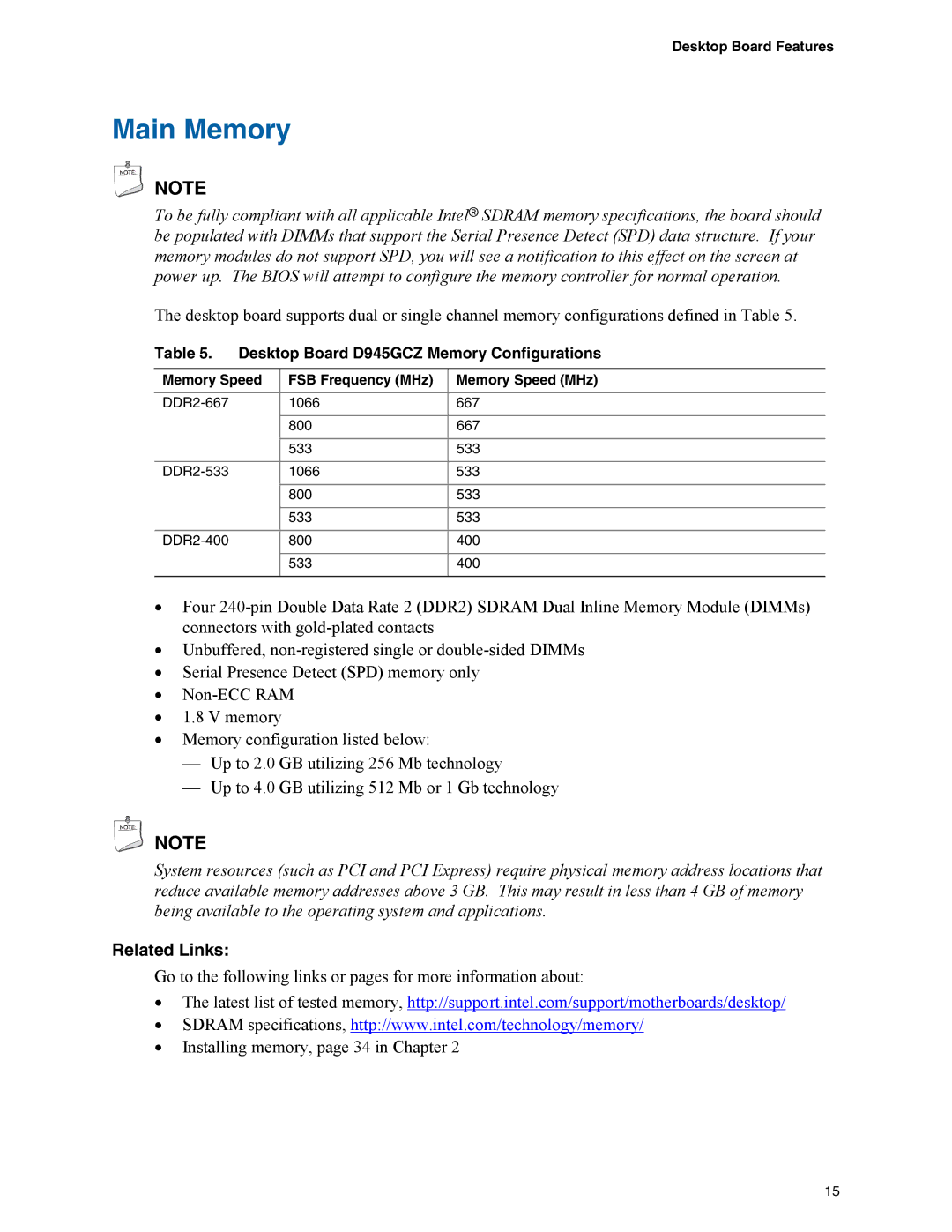Desktop Board Features
Main Memory
NOTE
To be fully compliant with all applicable Intel® SDRAM memory specifications, the board should be populated with DIMMs that support the Serial Presence Detect (SPD) data structure. If your memory modules do not support SPD, you will see a notification to this effect on the screen at power up. The BIOS will attempt to configure the memory controller for normal operation.
The desktop board supports dual or single channel memory configurations defined in Table 5.
Table 5. Desktop Board D945GCZ Memory Configurations
Memory Speed | FSB Frequency (MHz) | Memory Speed (MHz) |
|
|
|
1066 | 667 | |
|
|
|
| 800 | 667 |
|
|
|
| 533 | 533 |
|
|
|
1066 | 533 | |
|
|
|
| 800 | 533 |
|
|
|
| 533 | 533 |
|
|
|
800 | 400 | |
|
|
|
| 533 | 400 |
|
|
|
•Four
•Unbuffered,
•Serial Presence Detect (SPD) memory only
•
•1.8 V memory
•Memory configuration listed below:
⎯Up to 2.0 GB utilizing 256 Mb technology
⎯Up to 4.0 GB utilizing 512 Mb or 1 Gb technology
NOTE
System resources (such as PCI and PCI Express) require physical memory address locations that reduce available memory addresses above 3 GB. This may result in less than 4 GB of memory being available to the operating system and applications.
Related Links:
Go to the following links or pages for more information about:
•The latest list of tested memory, http://support.intel.com/support/motherboards/desktop/
•SDRAM specifications, http://www.intel.com/technology/memory/
•Installing memory, page 34 in Chapter 2
15
